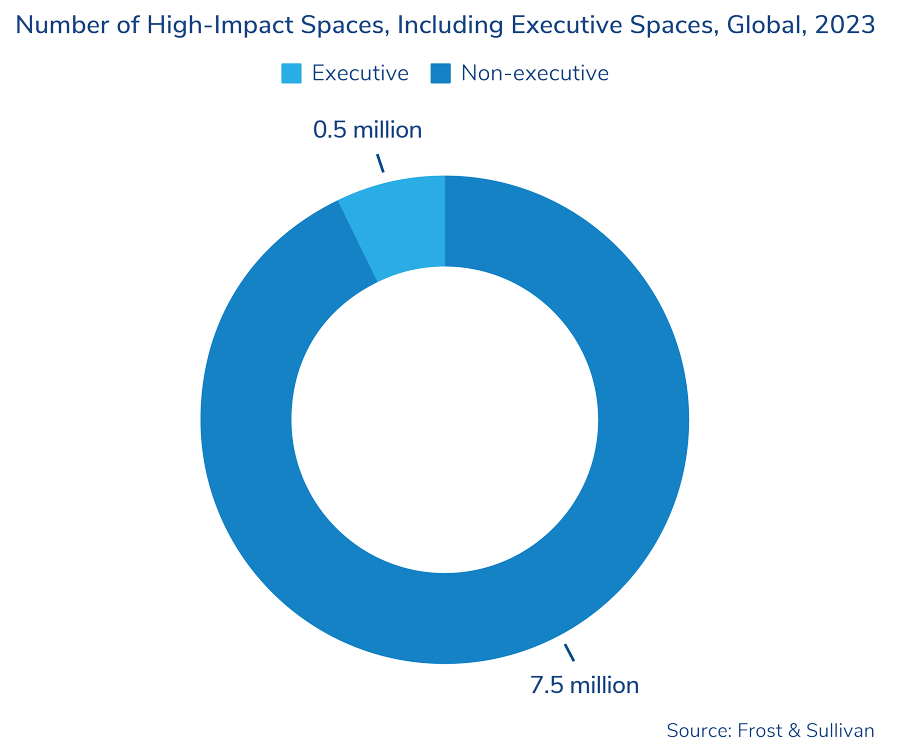Evolving Collaboration Requirements in the Next Era of Work
As organizations solidify hybrid work programs, they undertake processes to understand the material impact on their real estate. Within these processes, organizations are recognizing requirements for more collaborative technology-equipped spaces to better support more meetings with a greater number of distributed participants.
Frost & Sullivan and Q-SYS have engaged with end users, technology integrators, conferencing service providers, and equipment suppliers to assess the collaboration needs of hybrid workplaces. Reliability, quality, and robustness of meeting spaces–ensuring technology works every time with minimal support – remains a top concern for IT and AV professionals. For business leaders, equitable experiences for remote and onsite meeting participants are now a high priority.
Defining the High-Impact Space
Frost & Sullivan has noted the emergence of a new category of sophisticated meeting spaces characterized by elevated user experiences enabled by professional‐grade AV and control platforms. Traditionally, meeting spaces were equipped according to size, not the effect meeting spaces are designed to achieve.
The new category of “high-impact spaces” must deliver substantial, well-defined outcomes. High‐impact spaces gather stakeholders or large groups in highly visible spaces (e.g., flexible and divisible rooms, boardrooms, executive spaces, training rooms, and auditoriums).
High-impact spaces empower the accomplishment and creativity of top teams through combinations of advanced characteristics:
- They are dynamic, scalable, sophisticated, and employ professional‐grade AV and control platforms and integrate seamlessly with collaboration platforms to automate elevated experiences for all participants.
- They provide versatility to support a variety of engagements that often require features such as multi‐zone audio, video distribution, and room automation (e.g., automatic camera switching and intelligent noise-reducing microphones).
High-Impact Spaces are Growing in Prominence
High-impact spaces address the new challenges and opportunities in how workplaces are designed and organized. The desire to enhance employee engagement, connections, equity, and inclusion will also drive high-impact space proliferation.

High-impact space penetration will rise as spaces are identified and equipped in three scenarios: when offices move, are renovated, or when legacy equipment needs upgrades.
Most IT decision-makers surveyed by Frost & Sullivan expect their budgets to increase or remain the same. Those with increased budgets will allocate resources to up-level their collaboration capabilities. Those with unchanged budgets will still experience real-estate reduction and optimization, with savings pumped back into transformation projects, including high-impact spaces.
High-impact spaces can democratize work, giving everyone access to sophisticated meetings and creating an enjoyable environment and culture. Implement high-impact spaces that empower your skilled creators, communicators, and leaders to collaborate more effectively in the next work era.
Join Frost & Sullivan and thought leaders from Q-SYS and Microsoft on May 23 at 8:00 a.m. PT / 11:00 a.m. ET for an informative webinar, “Unlock Every Space’s Potential”. This discussion will dive into the value of high-impact spaces and how Microsoft and Q-SYS partner to provide technology to help you easily implement and scale impactful collaboration spaces and deliver engaging experiences for all meeting participants. Register Here.



